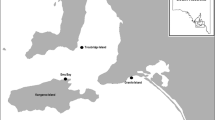Abstract
From April to July 2003 and 2004, we surveyed the nest-site selection of the White Eared pheasant (Crossoptilon crossoptilon) in the Zhujie Monastery and in the mountain facing it in Sichuan Province, China. In this paper, we studied the nest characteristics and the clutch size of the pheasant. Habitat sampling method was used to determine the variables that might affect the nest-site selection of the White Eared pheasant. Chi-square test was used to identify which habitat type was likely to be preferred by the bird. Independent-samples t test and Mann-Whitney U test were used to find which variables were important for the birds’ nest-site selection. A total of 13 nests were found. Oak shrub was greatly preferred as nest sites (84.62%). Nests under a rock wall (7.69%) and a fallen tree (7.69%) were also found. The average clutch size of a White Eared pheasant is 7.33±0.54 (range, 5–11; n=12). Laying period was between April 27 and May 21. In the Zhujie area, 1 nest was in the forest and 11 nests were in oak shrubs. The species preferred oak shrub as its nesting habitat (χ 2=8.333, df=1, P<0.05). The bird was more likely to place its nest in sites with a high coverage, i.e. 0.5, 1, and 2 m above the ground (independent-samples t test, P<0.05), and with a large shrub diameter (Mann-Whitney U test, P<0.05). The species are more likely to prefer sites with plant cover, shrub cover (independent-samples t test, P<0.05), and shrub height (Mann-Whitney U test, P<0.05) in a relatively small range.
Similar content being viewed by others
References
Badyacv A. V., Nesting habitat and nesting success of Eastern Wild Turkeys in the Arkansas Ozark Highlands, Condor, 1994, 97: 221–232
Clark R. G. and Nudds T. D., Habitat patch size and duck nesting success: the crucial experiments have not been performed, Wildl. Soc. Bull., 1991, 19: 534–543
Batt B. D. J., Afton A. D., Anderson M. G., Ankney C. D., Johnson D. H., Kadlec J. A. and Krapu G. L. (eds) Ecology and Management of Breeding Waterfowl, Minneapolis: University of Minnesota Press, 1992
Flint P. L. and Grand J. B., Nesting success of Northern Pintails on the coastal Yukon Kuskokwim Delta, Alaska, Condor, 1996, 98: 54–60
Traylor J. J., Alisauskas R. T. and Kehoe F. P., Nesting ecology of White-winged Scoters (Melanitta fusca deglandi) at Redberry Lake, Saskatchewan, Auk, 2004, 121: 950
Martin T. E., Avian life history evolution in relation to nest sites, nest predation, and food, Ecol. Monogr., 1995, 65: 101–127
Clark R. G. and Shutler D., Avian habitat selection: pattern from process in nest-site use by ducks, Ecology, 1999, 80: 272–287
Nguyen L. P., Hamr J. and Parker G. H., Nest site characteristics of Eastern Wild Turkeys in Central Ontario, Northeast. Nat., 2004, 11: 255–260
Lu T. C., The Rare and Endangered Gamebirds in China, Fuzhou: Fujian Science and Technology Press, 1991 (in Chinese)
Gema J. C., Dong D. F. and Long W. X., A preliminary study on ecology of White Eared-pheasant, Chin. J. Zool., 1999, 34: 26–28 (in Chinese)
Lu X. and Zheng G. M., Reproduction ecology of Tibetan Eared Pheasant Crossoptilon harmani in scrub environment, with special reference to the effect of food, Ibis, 2003, 145: 657–666
Lu T. C., Breeding ecology Tibetan Eared Pheasant, Acta Zool. Sin., 1986, 32: 369–373 (in Chinese)
Gema J. C., Dong D. F. and Long W. X., A preliminary study on breeding ecology of Tibetan Eared Pheasant, Wildlife, 1995, 6: 8–12 (in Chinese)
Wu Y. and Peng J. T., Breeding ecology of the White Eared Pheasant (Crossoptilon crossoptilon) in western Sichuan, China, J. Yamashina Inst. Ornithol., 1996, 28: 98–102
Smith S. A., Stewart N. J. and Gates J. E., Home ranges, habitat selection and mortality of ring-necked pheasants (Phasianus colchicus) in North-central Maryland, Am. Midl. Nat., 1999, 141: 185–197
Author information
Authors and Affiliations
Corresponding author
Additional information
Translated from Journal of Beijing Normal University (Natural Science), 2005, 41(2) (in Chinese)
Rights and permissions
About this article
Cite this article
Wang, N., Jia, F. & Zheng, G. Nest-site selection of the White Eared pheasant in southwestern Sichuan Province, China. Front. Biol. China 1, 66–70 (2006). https://doi.org/10.1007/s11515-005-0016-1
Issue Date:
DOI: https://doi.org/10.1007/s11515-005-0016-1




